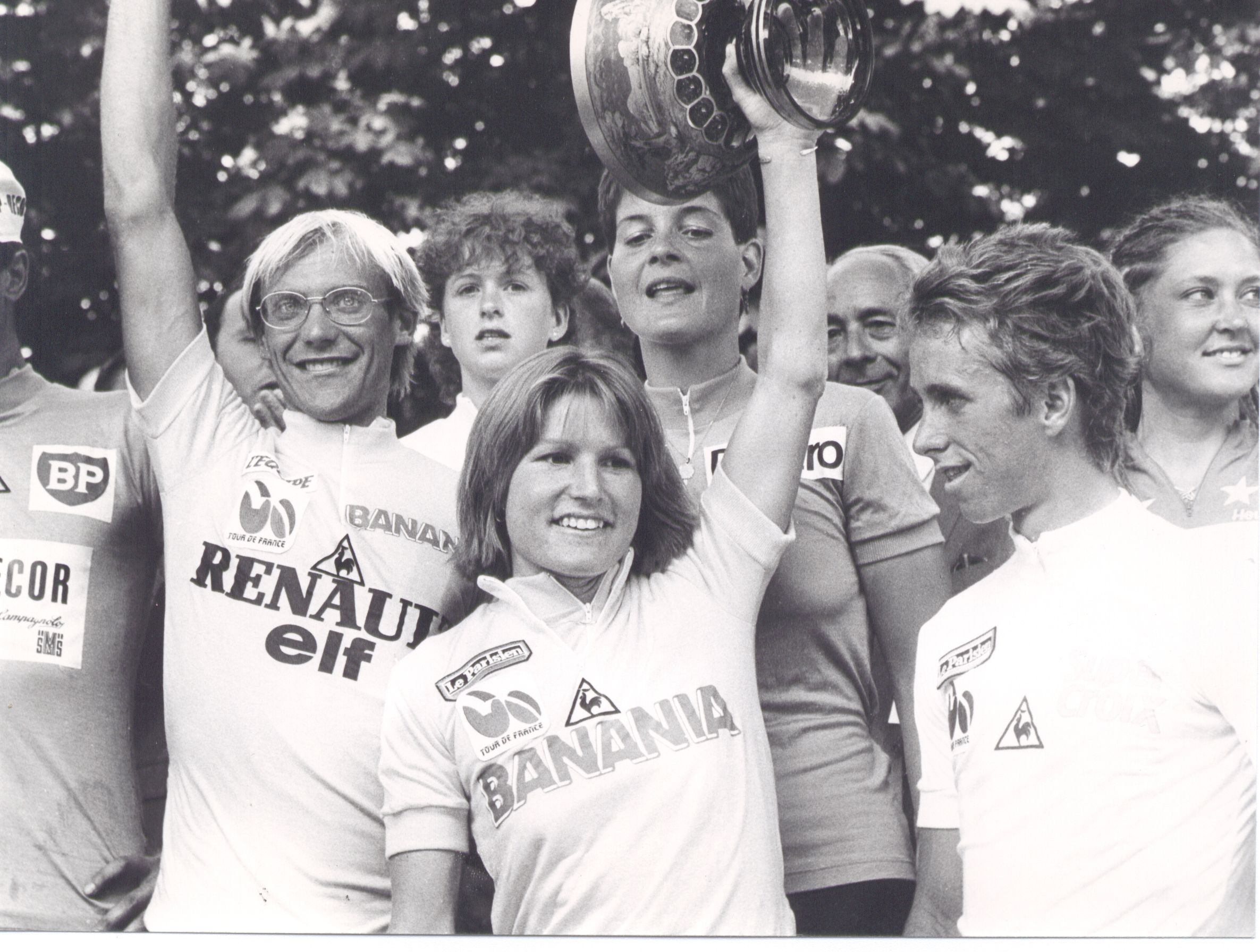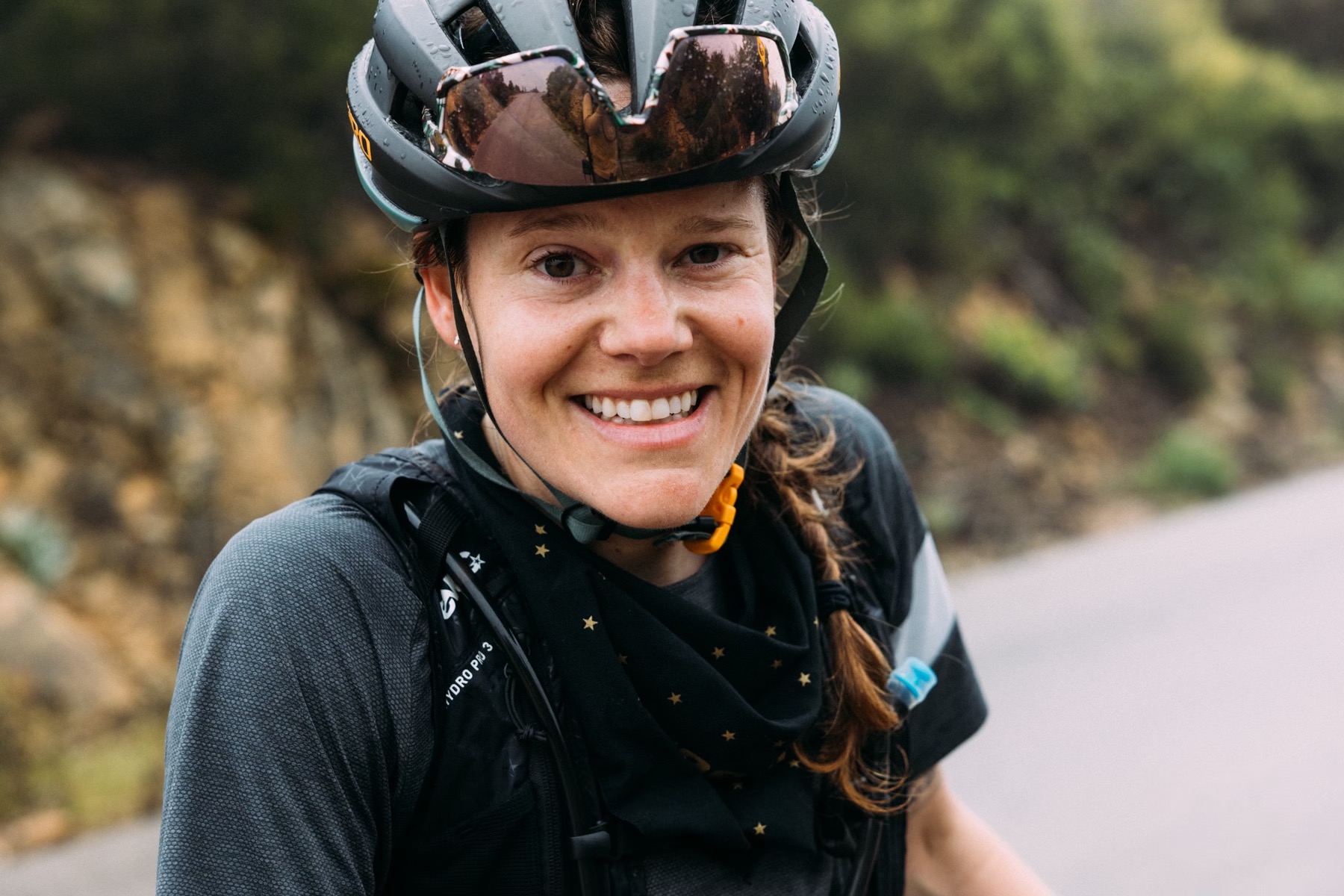991km, 1 yellow jersey and $10,000 in debt: the incredible journey of one cyclist's historic Tour de France win
Marianne Martin's 1984 Tour de France was a world apart from today's Tour de France Femmes


Today, thousands of cycling fans across the world flipped on their TVs to tune in as a 154-rider peloton made its way from Collonges-La-Rouge in the center of France west to Montignac-Lascaux for the third stage of the Tour de France Femmes avec Zwift. The quest for the iconic Maillot Jaune has gripped fans for more than three weeks already, and it's not over yet. The men's peloton has had its battle and now, the women take over to fight theirs. It almost feels like a given; the newness of a women's Tour de France already worn off after its momentous rebirth in 2022.
But it's a race that was hard-fought for and one that, for the entirety of current yellow-jersey wearer Lotte Kopecky's life, didn't even exist. Should she manage to keep the leader's jersey through the end of the race, she will be the second winner in a span of 34 years and only the eighth name on the women’s Tour de France winner’s list — as opposed to 110 on the men's side.
This void in the history books is one the first generation of women's Tour de France riders felt deeply. Today's well-funded, heavily marketed and professional operation that is the Tour de France Femmes and its contestants is also a far cry from the early days when riders were expected to fail and 1984 winner Marianne Martin went thousands of dollars in debt for a chance to compete.
"I think [the 1984 Tour de France Féminin] was a little bit before its time, but lucky for me. It shouldn't have been before its time; the attitude about women's sports should not have been any less than it is now, but realistically human nature changes slowly,” Martin told Cycling Weekly.
Martin was part of what many consider to be the heyday of women’s cycling: the 1980s.
These were the days of the iconic Coors Classic, which defined the careers of notable names like Connie Carpenter, Marie Canins, Jeannie Longo, Rebecca Twigg and Inga Thompson —the women that paved the way for icons like Leontien van Moorsel who in turn inspired the generation of Marianne Vos, Annemiek van Vleuten and Lizzie Deignan.
It was also the decade that saw the introduction of a women’s road race at the 1984 Olympics in Los Angeles, won by American multi-discipline Olympian Connie Carpenter.
The latest race content, interviews, features, reviews and expert buying guides, direct to your inbox!
And that same year, the Société du Tour de France hosted the first official women’s Tour de France, held in conjunction with the men’s event.
At this event, the women raced 18 stages over 22 days, on the same day and on the same courses (albeit shorter) as the men — 991 km (616 miles) in pursuit of yellow.
“I loved that we did 18 days. We didn't have huge mileage, but we did have the big climbs,” Martin said.
Martin’s 1984 season had been a rocky one. Struggling with health problems, she’d been riding poorly, but managed to recover just in time to make the U.S. national selection for the Tour de France. At the time, the Tour de France Féminin was contested by national teams rather than the trade teams they have today. The peloton was also significantly smaller. Martin was part of a six-member squad that competed against six other national teams, including two teams from the host nation, Great Britain, the Netherlands and Canada —just 36 riders as opposed to today’s field of 144.
In the Tour then as well as today, the race was dominated by the Dutch. They won all but three stages, and Martin had to wait 12 days for her turn to shine. The Coloradan had come to France eyeing the polka dot jersey. And sure enough, on the first day in the Alps, the then-26-year-old was first across the finish line in Grenoble, taking the lead in the Queen of the Mountain classification along the way. Two days later, as the mountain stages continued, no one could match Martin’s climbing prowess as rode herself into overall lead as well. She held onto the Maillot Jaune all the way through the final stage on the Champs Élysées in Paris, finishing three minutes and 17 seconds ahead of Dutchwoman Heleen Hage.
The streets were filled with millions of people, newspaper records say. People who had gone through quite a journey themselves, Martin revealed.
“The French did not think we would finish 18 days of racing, and they were out there expecting us to fail,” Martin said.
But as the days went on, only those who crashed out or got sick abandoned the Tour, just like in the men’s event. The rest plowed on though the French countryside and over the mountains. By the time the peloton reached Paris, the road side spectators were fans in earnest.
Eight Days is Not Enough
The crowds are massive at this year’s Tour de France Femmes avec Zwift as well, both along the roads in person and following along virtually.
"We as female athletes have long proven that we're capable,” Martin said. “I feel that there's much more long-term committed support behind the women's race now than there was then."
Martin did critique the women’s Tour de France revival for being too short.
“We did 18 stages and finished about two hours before the men came in. I loved how that was done. [With this year’s Tour de France Femmes] I personally would've liked to have seen the women do the same stages at the same time as the men then versus doing it in reverse and only eight days,” Martin commented.
"There's something about exceeding the expected that puts you against yourself in a way that doesn't happen when it's not quite so pushed.
“One day when we had a rest day, it was probably after eight or 10 days of racing, I really don't know what day it was, but there was a cute little courtyard down below my window so I'm like, ‘I'm gonna go walk downstairs and sit in the courtyard’. I could not even sit in the courtyard. I had to go back upstairs and lay down. I was completely wasted, but then you go out and race the next day and well, I won the next day and it’s amazing what your body can do.”
Having a women’s Tour de France or Paris-Roubaix or Milan-San Remo has never been about women lacking the skill or ability, Martin argued. It’s about women being allowed to compete and having the resources to do so.
“I know there's a lot of different factors going on, but I think women are much more capable than men can begin to think,” she said. “I do believe it needs to be a business decision to add women’s events. It's got to make money in the end, and thank God Zwift came in and is supporting it.”

$10,000 in debt
When Martin grabbed her opportunity to race the Tour de France in 1984, she did so at great expense, both financially and physically.
“To get a place on the U.S. cycling team, you had to do certain races, and they were all around the country. I had a local team that would pay my entry fee [at local event] but they had no benefit for me to win a race in California, or even be in a race in California because they were a local company,” she stated.
And so, the travel expenses came out of her own pocket.
“I just put it on my credit card, because I wanted to go to the top. I wasn't going to let money stop me from doing what I really wanted to do in my life, because I knew I had my whole life to repay money. It was my body that was limited,” she said.
She went $10,000 in debt to pursue her dream, which in today’s economy is closer to $30,000 — a rather significant chunk of change.
Following her Tour de France success, Martin hoped to find sponsors and fund a team to continue racing, but the money wasn’t there and the debt kept growing. And then her body gave in.
“The year after the Tour I got selected to go race the spring series in Europe, which was great. It's just that it rained pretty much every day, and I got sick but kept racing, because, you know, you just do. But I came back from that and that's when my body started really having trouble. Like I just couldn't recover,” she said.
She kept at it, racing big events like the Coors Classic despite her body showing clear signs that it was unable to keep up.
“I tore my body down more and more, and I really struggled that year. The next year wasn't any better. I wasn't racing well, I wasn't healthy. And so I made the decision to quit,” she recalled.
In financial and physical trouble, Martin moved to Los Angeles, California to take an advertising job. She lived in the City of Angels for two years, two months and 14 days —an exact number she rattled off as though that’s a completely normal thing people do. When asked why she counted the days there, Martin explained that as a small town Colorado woman, the big city was entirely overwhelming. It also broke her heart to not be racing, but her health problems persevered.
“I paid off all my debt in those two years, but I didn't really ride much for 20 years. My body wasn't recovering, and if I went aerobic, I would end up getting sick,” she shared.
Eventually, the Colorado mountain air and an air purifier inside her house showed improvements in her health.
“It completely changed my life. I don't really know what [the illness] was and you know what, I don't care at all, because I got my life back. I started trail running and cycling again, and now it's still part of my life,” she said.
A post shared by Kate ‘BFK’ Veronneau (@kateveronneau)
A photo posted by on
Post-Tour Life
These days, Martin enjoys a quiet life as a portrait photographer, and lost touch with the cycling world many years ago. It was only the creation of the Tour de France Femmes and all the hype around it that threw her back in.
“I've been doing more interviews and stuff now than I ever did when my race was on,” she commented. “I don't even have a TV and don’t follow cycling much. Sometimes when the Tour is on, I'll go work at a coffee shop so I can watch it. I do still love hearing Phil Liggett’s voice.”
When asked what she remembers most fondly of her racing days, Martin said simply, “adrenaline.”
“I do love adrenaline. I'm a complete adrenaline junkie and I'm a real fitness junkie, too. At that time in my life, I got my fix of adrenaline every week and I traveled with the best people, the best friends, all around the country for the U.S. circuit. I loved my life. It was very exciting and very emotional. There were definite ups and downs, but it was intense. I love intensity. It was everything I could ask for,” she said.
“It was hard to transition away from it, but now cycling to me is a social way of fitness.”

Cycling Weekly's North American Editor, Anne-Marije Rook is old school. She holds a degree in journalism and started out as a newspaper reporter — in print! She can even be seen bringing a pen and notepad to the press conference.
Originally from the Netherlands, she grew up a bike commuter and didn't find bike racing until her early twenties when living in Seattle, Washington. Strengthened by the many miles spent darting around Seattle's hilly streets on a steel single speed, Rook's progression in the sport was a quick one. As she competed at the elite level, her journalism career followed, and soon, she became a full-time cycling journalist. She's now been a journalist for two decades, including 12 years in cycling.